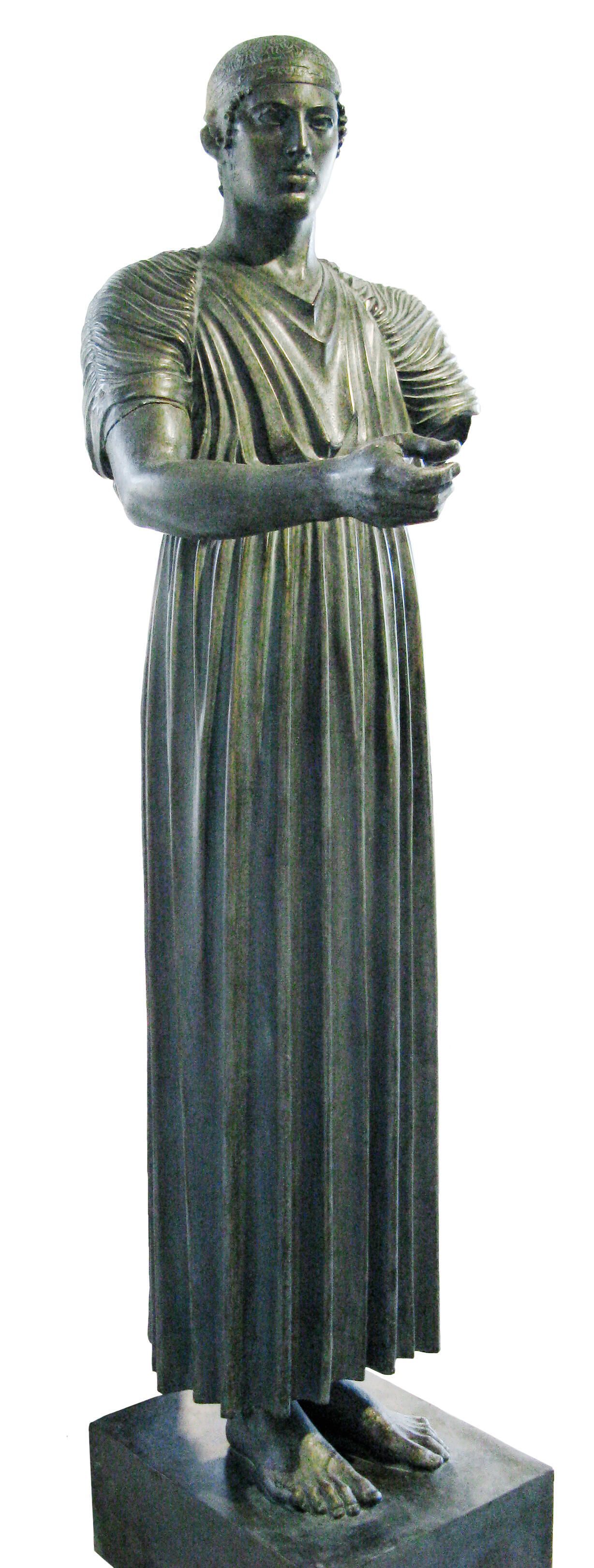Charioteer of Delphi
Name/Title
Charioteer of DelphiEntry/Object ID
75G0505Description
Standing male charioteer in chiton, left arm missing below elbow, right arm restored from elbow. Reinforced plaster replica with verdigris finish; bronze original.Type of Sculpture
StatueArtwork Details
Medium
BronzeSubject
CharioteerSubject Place
City
DelphiCountry
GreeceContext
The Charioteer of Delphi is only one piece of a larger statue group dedicated to Apollo by Polyzalos of Gela, a Sicilian tyrant, to commemorate his victory in the chariot races at the Pythian Games in Delphi in 478 or 474 BCE. The charioteer was discovered buried with pieces of a chariot, reins, four horses and a groom, indicating he was originally part of a larger bronze sculpture. The detailed physical features and open pose of the statue are indicative of the transition towards the more naturalistic Classical style, but some elements are still reminiscent of the archaic style (see also: Kouros of Paros). The charioteer’s chiton (long robe) is belted very high on his torso and the naturalistically distributed folds meet at the hemline thus emphasizing the depth of the folds. From the hemline, the folds fall in seemingly straight lines, retaining a more archaic rigidity and contributing to the symmetrical stiffness of the sculpture. Furthermore, the charioteer is not captured in victory or even in movement, rather he remains static. The statue’s facial expression shows a natural ease, and the detailed curls of the hair indicate a more idealized realism that would become a feature of the Classical period. The detail in his feet, though it may seem insignificant today, was particularly admirable at the time of creation and may have indicated an intent to copy the natural human form. Thus, the charioteer retains some characteristics of the Archaic period while aiming for more naturalistic details, and is an apt representation of the Transitional Period of Greek art.Collection
Transitional GreekMade/Created
Date made
474 BCE - 474 BCETime Period
Transitional GreekEthnography
Culture/Tribe
Greek - Transitional

